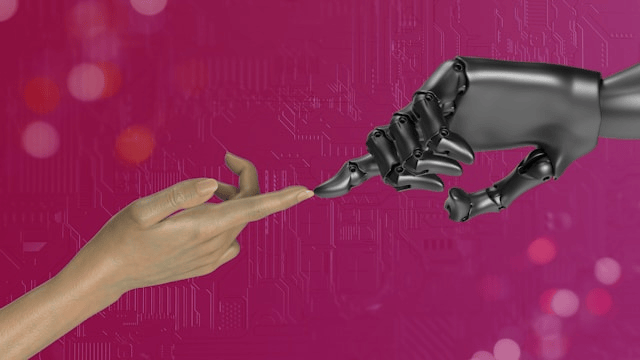As artificial intelligence becomes more advanced, one question keeps coming up: can AI read emotions? The idea that machines might one day understand human feelings isn’t just science fiction anymore it’s already being tested in customer service, marketing, education, and even mental health applications. But how well does emotional artificial intelligence actually work, and what are the implications of teaching machines to recognize human emotion?
Let’s explore what emotion recognition AI is, how it functions, what it can and cannot do, and the ethical questions that arise from machines attempting to decode human emotions.
What Is Emotion Recognition AI?
Emotion recognition AI refers to systems designed to detect and interpret human emotions by analyzing data such as facial expressions, voice tone, body language, and even written text. This type of technology falls under a broader field known as affective computing, which focuses on developing machines that can understand, simulate, or respond to emotional cues.
The ultimate goal of emotional AI isn’t to create empathetic machines, but to enhance user experience, automate decision-making, or improve services by predicting emotional states. For example, a virtual assistant might detect frustration in your voice and adjust its response to be more helpful or calming.
How AI Attempts to Detect Emotions
To understand how emotion recognition AI works, it’s important to look at the main data sources and techniques used:
1. Facial Recognition
AI uses computer vision to track facial movements like a raised eyebrow or a frown and maps them to known emotional states (happiness, sadness, anger, etc.). Companies like Affectiva and Microsoft have developed software that attempts to do just that.
2. Voice Analysis
Emotional AI tools analyze tone, pitch, volume, and speech patterns. A voice assistant might detect stress or urgency in your tone and adjust its reply accordingly.
3. Natural Language Processing (NLP)
By analyzing the words people use, AI can detect sentiment. Sentiment analysis tools scan text such as reviews, messages, or social media posts to gauge whether the language is positive, negative, or neutral.
4. Multimodal Approaches
The most sophisticated emotion detection systems combine multiple data inputs: facial expressions, speech, and text. These systems offer a more holistic view of emotional states but are also more complex and potentially less accurate in real-world environments.
Is AI Actually Good at Reading Emotions?
So, can AI read emotions accurately? The answer is both yes and no. Emotion recognition AI can sometimes successfully detect basic emotions like happiness or anger under controlled conditions. But when it comes to nuance like sarcasm, mixed feelings, or cultural differences AI often falls short.
Researchers argue that facial expressions and voice tones are not always reliable indicators of how someone feels. People can smile when they’re nervous, speak calmly when they’re angry, or use slang and humor that AI can’t interpret. Moreover, many AI models are trained on limited and often biased datasets, leading to inaccuracies in recognizing emotions across different genders, ages, or ethnic backgrounds.
Affective computing is improving, but the technology is far from perfect. What AI detects may be emotion-like signals rather than true emotional understanding.
Real-World Applications of Emotional AI
Despite its limitations, emotional artificial intelligence is already in use in various industries:
-
Customer Service: Chatbots and virtual agents equipped with emotion AI can detect frustration and escalate interactions to a human representative.
-
Marketing: Brands analyze customer reactions in real time to refine advertising and product placement strategies.
-
Healthcare: AI tools are used to monitor mood and detect signs of mental health issues such as depression or anxiety, often through voice and text analysis.
-
$Education: Emotion-sensing software helps e-learning platforms adapt content based on student engagement and mood.
-
Security and Surveillance: AI is used to monitor facial expressions in public spaces, though this application is highly controversial.
These use cases highlight how businesses are relying on AI emotion detection to enhance personalization and improve outcomes.
Challenges and Limitations
Emotion recognition AI faces significant challenges that go beyond technical accuracy:
-
Bias in Data: If training data lacks diversity, the system may misread emotions for certain groups.
-
Context Misunderstanding: AI often struggles with sarcasm, humor, or culturally specific expressions.
-
Lack of Empathy: Even if AI detects sadness, it doesn’t understand why someone is sad, nor can it genuinely empathize.
-
Over-Reliance: Businesses may lean too heavily on AI without human oversight, leading to poor or insensitive decisions.
While affective computing holds promise, it still requires substantial improvement to be truly reliable in real-world situations.
The Ethics of Emotion AI
The idea of machines reading emotions raises serious ethical questions. Should AI be used to detect emotional states without explicit consent? How should emotional data be stored, shared, or used?
Privacy concerns are at the forefront, especially when people don’t know they’re being analyzed. Emotional AI in surveillance, for example, could lead to unjust profiling or discrimination. There’s also the risk of emotional manipulation, where businesses use emotional insights to push consumers into decisions they wouldn’t otherwise make.
Ethical guidelines for emotional artificial intelligence are still developing. Transparency, accountability, and informed consent must be built into any system that attempts to read human emotions.
The Future of Emotional Artificial Intelligence
Looking ahead, the future of emotion recognition AI is likely to involve more refined models, better data diversity, and tighter ethical controls. Developers are working on tools that can read emotions more accurately across cultures and age groups, while regulators are starting to propose frameworks for safer use.
But no matter how advanced emotional AI becomes, it’s unlikely to truly “understand” feelings the way humans do. Empathy, intuition, and emotional intelligence are deeply human traits that machines can simulate but not authentically replicate.
Conclusion
So, can AI read emotions? Technologically, yes to an extent. Emotion recognition AI is capable of identifying basic emotional cues from facial expressions, speech, and text. But the technology still faces major limitations in accuracy, bias, and ethical responsibility.









